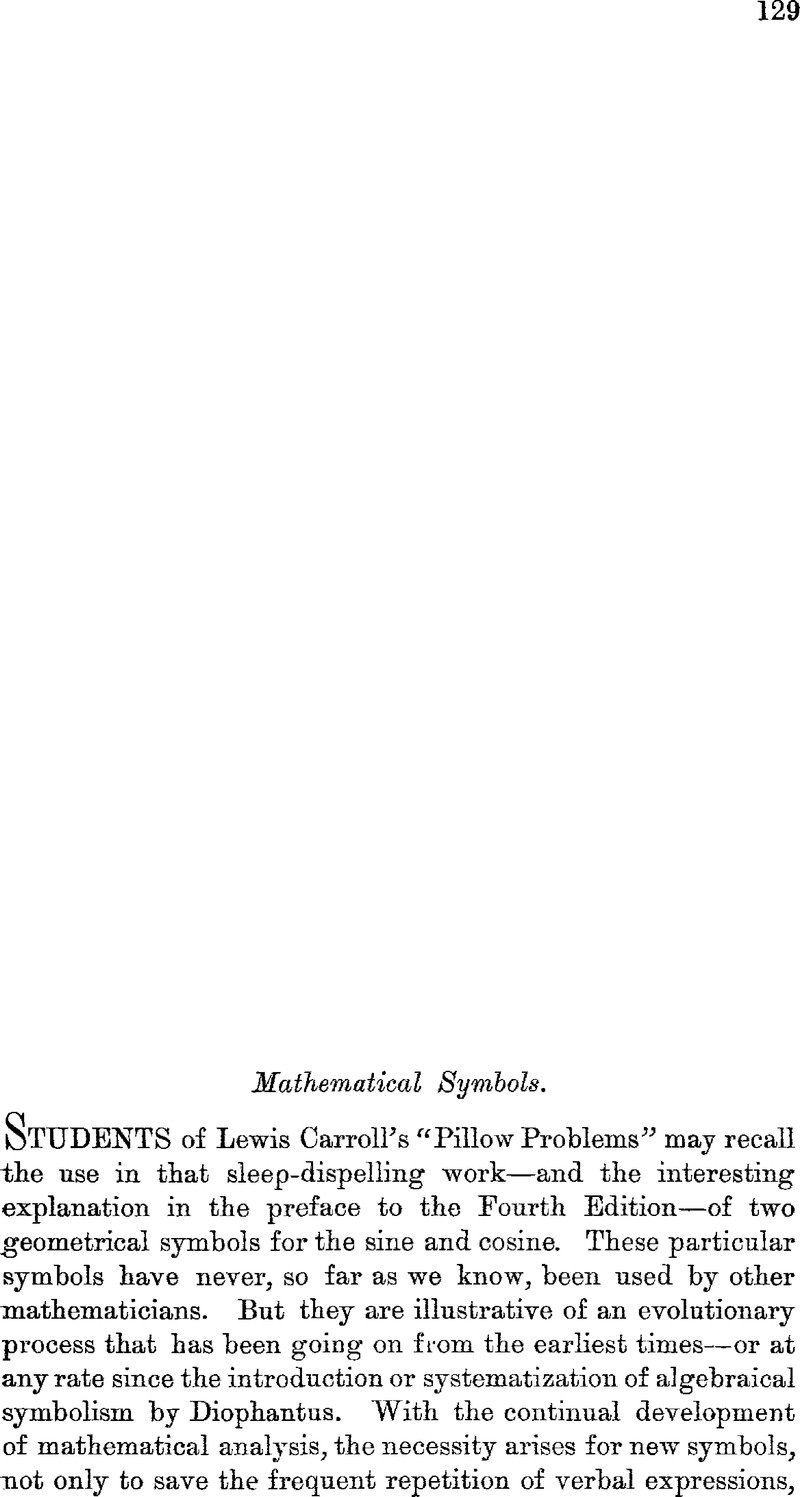No CrossRef data available.
Published online by Cambridge University Press: 18 August 2016

page 130 note * “to avoide the tediouse repetition of these woordes : is equalle to : I will “sette as I doe often in woorke use, a paire of paralleles, or Gemowe” [i.e., twin] “lines of one lengthe, thus : = : bicause noe 2 thynges can be moare equalle.” —The Whetstone of Witte, 1557.
page 130 note † For some information as to the origin of the more common symbols in algebra reference may be made to W. W. House Ball's Short Account of the History of Mathematics, and to the article on Algebra in the Encyclopædia Britannica.
We are indebted to Mr. G. J. Lidstone for the following interesting extract from Arbogast's Du Calcul des Dérivations:
“Il a fallu introduire des signes nouveaux; j'ai donné une attention particulière à cet objet, persuadé que le secret de la puissance de l'Analyse consiste de la choix et l'emploi heureux des signes simples et caractéristiques de la chose qu'ils doivent representer. Je me suis prescrit à cet egard les règies suivantes : (1) de rendre les notations le plus qu'il était possible analogues à des notations reçues; (2) de ne point introduire des notations inutiles et que j'aurais pu remplacer sans confusion par des notations déjà en usage; (3) de les choisir trèssimples, en y faisant entrer cependant toutes les variétés qu'exigent les différences des operations.”
page 134 note *
Rouse Ball,however, remarks (loc. cit. p. 242) that the symbols ![]() “are, I believe, now rarely used outside Great Britain; they were employed, if “not invented, by Euler. The symbols ≧ and ≦ were introduced by P. Bouguer ” in 1734,.”
“are, I believe, now rarely used outside Great Britain; they were employed, if “not invented, by Euler. The symbols ≧ and ≦ were introduced by P. Bouguer ” in 1734,.”